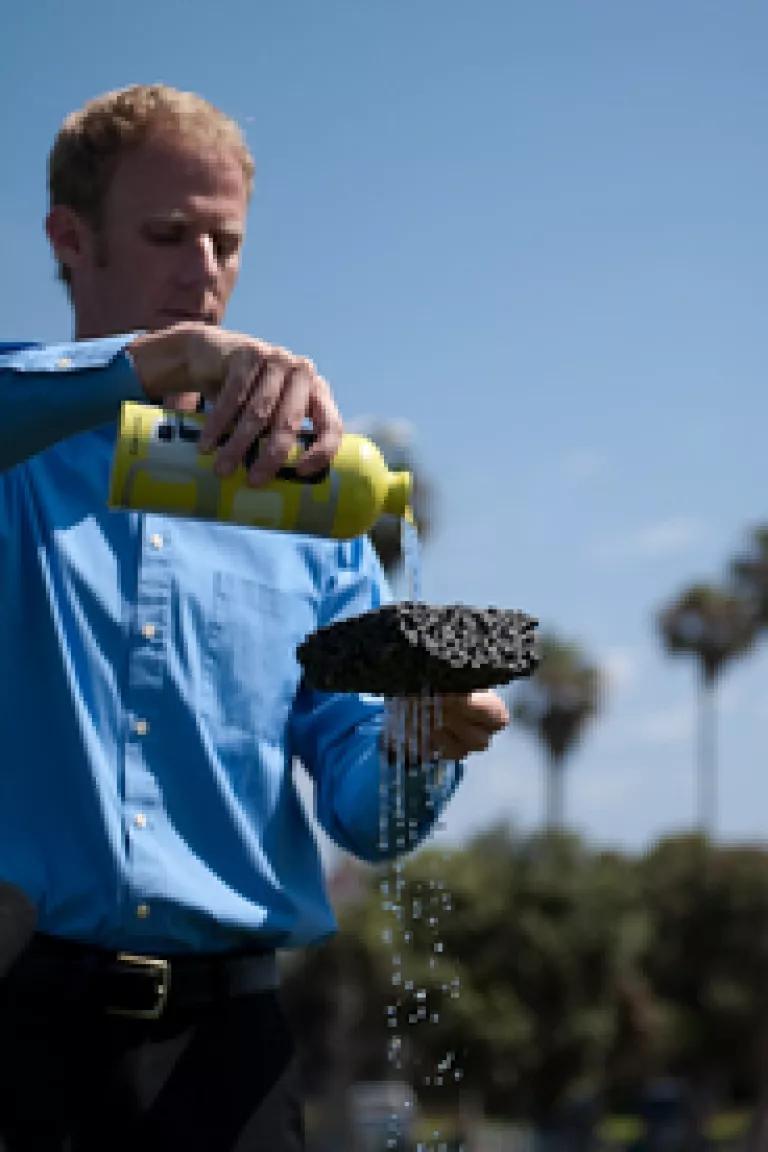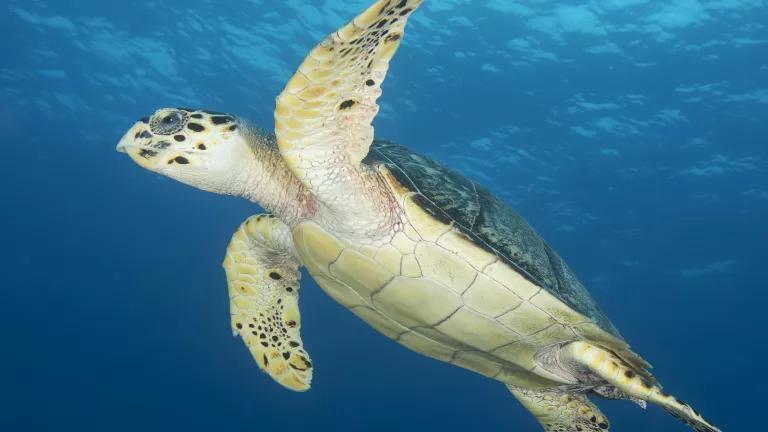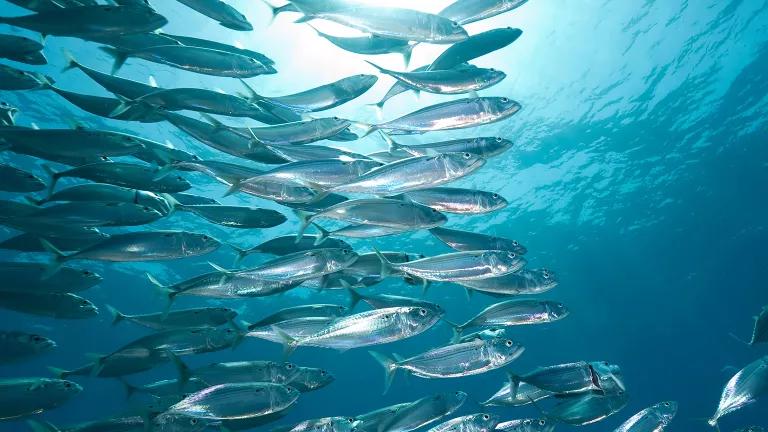The Fourth of July is just around the corner – and Americans nationwide are breaking out their swimsuits, loading up their cars and heading to the beach. It’s a summer rite of passage – but unfortunately it can also make you sick.

As the picture to the right indicates, I’m more of a beach sleeper (to the apparent consternation of my niece) than I am a swimmer, especially now that I’ve become a complete wimp about cold water in my middle age. But, if you are a swimmer, you may want to find out more about water quality and the beach management practices at your favorite swimming spot. According to NRDC’s 21st annual beachwater quality report – out today -- beach closings and advisories totaled more than 24,000 days last year. That’s the second highest number in the more than two decades that NRDC has put out this report. Seventy percent of those were issued because bacteria levels exceeded public health standards, indicating the presence of human and animal waste.
Gross, huh? No one wants to swim in that, yet NRDC’s Testing the Waters report found that stormwater runoff and sewage overflows continue to plague America’s beaches – as they have for decades. The difference is – now we know how to clean it up.
I’ll get to those solutions for cleaner beachwater in just a moment, but first – here’s a rundown of the top findings in this year’s report:
The Top 10 Repeat Offenders
Over the last five years, sections of 10 beaches have stood out as having persistent contamination problems, with water samples exceeding health standards more than 25 percent of the time:
California: Avalon Beach in Los Angeles County (3 of 5 monitored sections):
- Avalon Beach – Near Busy B Café
- Avalon Beach – North of GP Pier
- Avalon Beach – South of GP Pier
California: Cabrillo Beach in Los Angeles County
California: Doheny State Beach in Orange County (2 of 6 monitored sections):
- Doheny State Beach – North of San Juan Creek
- Doheny State Beach – Surfzone at Outfall
Florida: Keaton Beach in Taylor County
Illinois: North Point Marina North Beach in Lake County
New Jersey: Beachwood Beach West in Ocean County
Ohio: Villa Angela State Park in Cuyahoga County
Texas: Ropes Park in Nueces County
Wisconsin: Eichelman beach in Kenosha County
Wisconsin: South Shore Beach in Milwaukee
Swimming in contaminated water can have significant consequences. Bacteria in the waves can lead to skin rashes, pinkeye, gastrointestinal problems, respiratory infections, and hepatitis.
One study found that swimmers at polluted beaches in the Great Lakes region were more likely than non-swimmers to have gastrointestinal illnesses. Children are especially vulnerable since they tend to out their heads underwater more often and are more likely to swallow water when swimming.
Superstar Beaches
On the other side of the spectrum – there were a few beaches that stood out as top performers.
In recent years, NRDC has issued ratings of water quality at 200 of the nation’s most popular beaches, evaluating their water quality results and best practices for testing and public notification. We do so again this year.
But this year, for the first time, we took that one step further – awarding “Superstar Beach” status to four beaches featured in our star rating guide. These beaches not only received the highest (5-star) rating , but had perfect testing results for the past three years, indicating a history of very good water quality. Those beaches are:
Delaware: Rehoboth Beach-Rehoboth Avenue Beach, in Sussex County
Delaware: Dewey Beach, in Sussex County
Minnesota: Park Point Lafayette Community Club Beach, in St. Louis County
New Hampshire: Hampton Beach State Park in Rockingham County
So, before you resign yourself to the beach chair, remember that plenty of beaches have very good water quality and many states work hard to keep swimmers safe.
Looking at water quality testing alone, in 2010, the Southeast, the New York and New Jersey coastline, and the Delmarva area had the lowest rates of contamination in the country, with only 4 percent, 5 percent and 6 percent of tests indicating contamination, respectively. The specific states with the lowest rates of contamination last year were: New Hampshire (1 percent), New Jersey (2 percent), Oregon (3 percent), Hawaii (3 percent) and Delaware (3 percent).
Causes of Contamination & Solution for Cleaning It Up
Why aren’t all of America’s beaches Superstars? There are many sources of beachwater pollution, but the single most identified cause was stormwater runoff. Sewage overflows were also a contributor.
When it rains on paved streets, rooftops and parking lots, water rushes into storm drains, carrying oil, toxins, pet waste, and fertilizers along with it. In many communities, stormwater gets passed through the same pipes as sewage. During a downpour, those systems often get swamped, leading to overflows directly into waterways. That disgusting brew of polluted stormwater and raw sewage—and all its accompanying bacteria, viruses, and parasites—too often finds its way to our beaches.
But this is preventable. We know how to stop it.

And the best way to do it is to capture rain water before it rushes into storm drains and sewage pipes. Green infrastructure — things like parks, porous pavement (pictured in action to the left), green roofs and rain barrels — help capture rain where it falls. These solutions not only cut down on dirty stormwater and sewage overflows, but they also add green space to neighborhoods, increase property values, reduce asthma and heat-related illnesses, and save on heating and cooling energy costs.
Cities around the nation are beginning to embrace green infrastructure solutions. Now, EPA has a once-in-a-generation opportunity to increase its prevalence on the national level by overhauling its national rules designed to tackle runoff pollution, when it revisits them later this year.
By embracing green infrastructure at a national scale, the government can significantly clean up the water at America’s beaches, as discussed in the video below. NRDC is hopeful this report will encourage them to do the right thing for beach-lovers everywhere – and make the water cleaner into the future.
If you’re heading to the beach this Independence Day, here are some tips for a safe and healthy trip.



